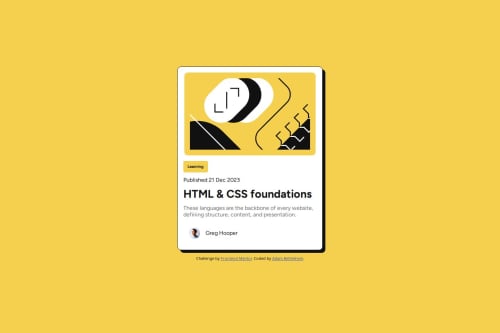Css, FlexBox - blog preview

Solution retrospective
I was able to get it pretty close to the original design. I'm sure if I spent another hour or so I could refine it even more.
I was stuck in tutorial hell feeling I had no clue when it comes to CSS, but by actually doing the challenges I'm finding I have learned some techniques and even some theories.
The thing I'm proud of the most is actually starting to do it
What challenges did you encounter, and how did you overcome them?This time I decided to use the Figma designs and it was very helpful, much easier trying the solution from the image
I just found it hard to understand if the figma dev-tools styling was inheriting styles and layout or if all my container elements must be flexboxes
I also tried to stick to the designs as much as possible but some of the values just didn't work for me
What specific areas of your project would you like help with?I still need to better understand what elements need to display: flex;
A part I'm struggling with is defining the height and width... how do you know what units to use? Should I always set height and width?
When do you let the child content determine the layout size?
Please log in to post a comment
Log in with GitHubCommunity feedback
No feedback yet. Be the first to give feedback on Adam Bethlehem's solution.
Join our Discord community
Join thousands of Frontend Mentor community members taking the challenges, sharing resources, helping each other, and chatting about all things front-end!
Join our Discord